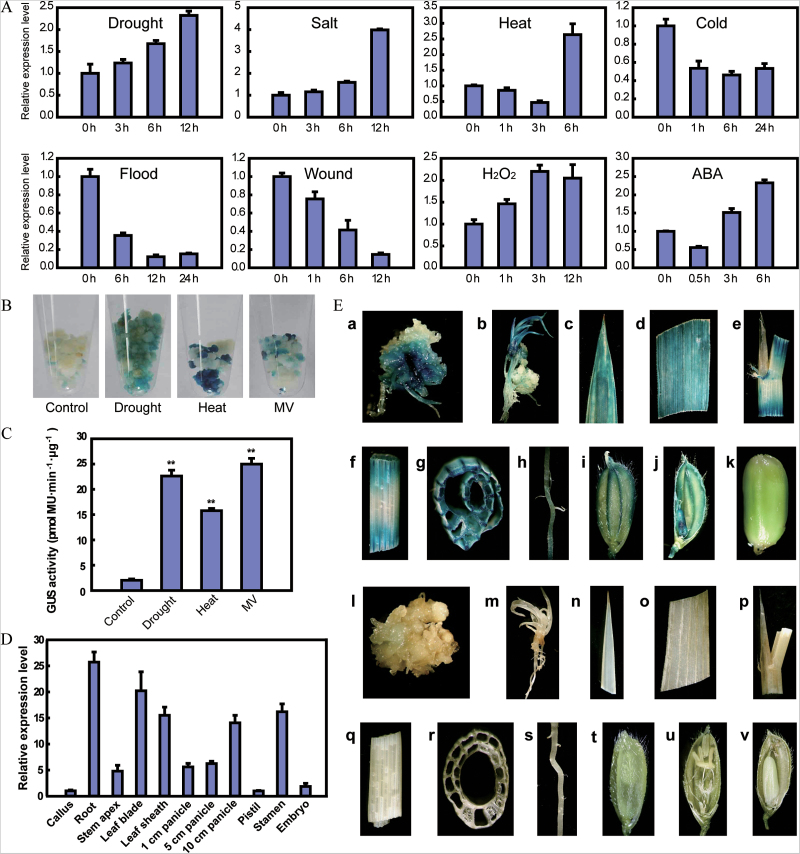Fig. 1.
Expression pattern analysis of SNAC3. (A) Expression level of SNAC3 under various abiotic stresses and ABA treatment. Four-leaf stage seedlings were subjected to drought, salt (200 mmol l–1 NaCl), heat (42 °C), cold (4 °C), flood, wounding, H2O2 (1% H2O2), and ABA treatment (100 mmol l–1 ABA). The relative expression level of SNAC3 was detected by qPCR at the indicated times. Error bars indicated the SE based on three replicates. (B) Expression pattern of the GUS reporter gene driven by the SNAC3 promoter in transgenic resistant callus under normal conditions (control), drought, heat, and MV stress. (C) GUS activity quantification in P SNAC3:GUS transgenic resistant callus under normal conditions, drought, heat, and MV stress. GUS activity was defined in picomoles of 4-MU generated per minute per microgram of protein. (D) Detection of SNAC3 expression in various tissues and organs using qPCR. Error bars indicate the SE based on three technical replicates. (E) Expression pattern under normal conditions. (a–k) GUS staining of tissues and organs from P SNAC3:GUS transgenic plants; (l–v) GUS staining of tissues and organs from ZH11 plants. (a and l) callus; (b and m) regenerated seedling; (c and n) leaf tip; (d and o), leaf blade; (e and p) ligule, collar, and auricle; (f and q) leaf sheath; (g and r) cross-section of the leaf sheath; (h and s) root; (i and t) hull; (j and u) stamen and pistil; (k and v) seed.

